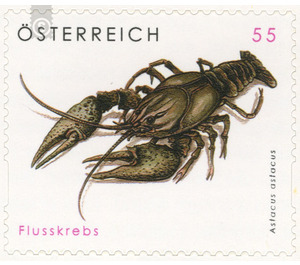animal welfare - Austria / II. Republic of Austria 2007 - 55 Euro Cent
Theme: Animals
| Country | Austria / II. Republic of Austria |
| Issue Date | 2007 |
| Face Value | 55.00 |
| Edition Issued | 300,000 |
| Printing Type | Photogravure |
| Stamp Type | Commemorative |
| Item Type | Stamp |
| Chronological Issue Number | 1985 |
| Chronological Chapter | OOS-OE2 |
| SID | 69738 |
| In 44 Wishlists | |
The habitat of the fire salamander (Salamandra salamandra) ranges from Northern Germany over the Carpathians to the Ukraine and Romania, via Bulgaria to Greece and the Iberian Peninsula. As striking is its appearance - so hidden is the existence that it leads: In niches of caves, under dead wood and flat stones, between boulders and under tree roots or in the gap system of the soil. The predominantly nocturnal salamander can be found during the day only after or during heavy rains. Among the native amphibians, the fire salamander is the species with the closest attachment to the habitat forest. Adult Central European specimens reach a body length of up to 23 centimeters and a body weight of about 40 grams. The smooth, deep black skin is interrupted on the back by a yellow, occasionally orange to red drawing pattern of dots and lines. As with other amphibian species, fire salamander can also influence the intensity of body coloration. Because of its distinctive appearance, the fire salamander has been very familiar to humans for a long time. This awareness was not always to his advantage. In earlier centuries, it was believed that his skin secretions were not only deadly poisonous, but also capable of extinguishing fires. Accordingly, the people reacted and threw the animals into the fire; this is also the name goes back. Only in the middle of the 18th century were amphibians and reptiles freed from negative symbolism, magic and superstition. The crayfish (Astacus astacus) is characterized by its typical structure of the body in the head-chest area and abdomen. Both are covered by a thick shell. There are five pairs of legs on the front body, the foremost being reshaped into large scissors. The remainder serve as legs on which gills hang with which the animal breathes. Crayfish are twilight and nocturnal. As a loner they do not shy away from eating moons that have temporarily become vulnerable through moulting. With their large scissors they grab the prey, the smaller scissors of the second and third pair of tufts divide them and bring them to their mouths. Crayfish are omnivores: they catch aquatic insects, worms, newts, frogs, snails and shells. It is easier to get sick fish and carrion than healthy animals - so they are more often on their diet. But also water plants, leaves, algae and moldy wood are eaten by them. Mating season is from October to November. After a mating by the male (in the females are, lying on their back, seed packages deposited near the genital opening), the female sticks the fertilized eggs to the limbs of the abdomen and carries them about half a year with them. Only from May to June hatch the larvae, which differ only in size and proportions of the limbs of adult animals. For about ten days, the small crabs cling to the mother's animal, only then they let go and start an independent existence - but only about ten to twenty percent survive.


